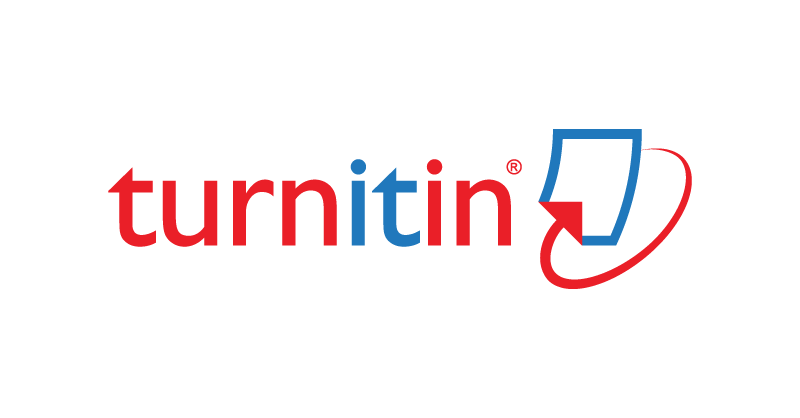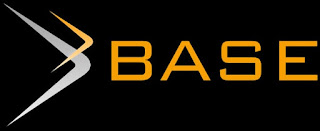OPTIMALISASI PENGELOLAAN ASET WAKAF DI KECAMATAN PONOROGO
DOI:
https://doi.org/10.21154/muslimheritage.v7i2.3887Keywords:
Strategy, Nadzir, Waqf Management, MosqueAbstract
Abstract
Nadzir is an important element in the wakalah waqf process. Waqfs wishing to donate their assets as waqf must choose a nadzir as the recipient of the assets as well as a trusted party to manage it. Nadzir is divided into three types, namely: foundations, legal entities, and individuals. Given the importance of the existence of the nadzir in the waqf procession, an appropriate strategy is needed to maintain the existence of waqf assets so that they are always beneficial to the waqif, as well as to the people. Therefore, this article aims to reveal the implementation of the nadzir strategy in optimizing waqf assets in the Ponorogo District area. The research method used in writing this research article is a multi-site qualitative research method, which was conducted in three different mosques, namely: 1. As-Salam Sunan Muria Bangunsari Ponorogo Mosque which is a representation of waqf assets managed by individuals. 2. K.H. Mosque Ahmad Dahlan Nologaten Ponorogo which is a representation of waqf assets managed by the Muhammadiyah organization. 3. Nadhlatul Ulama Sultan Agung Bangunsari Ponorogo Mosque which represents waqf assets managed by the Nadhlatul Ulama organization. Data collection techniques were carried out through interviews, participant observation, and documentation. The results of the study show that efforts to optimize the management of waqf assets are carried out by each nadzir by applying the blue ocean strategy management model based on the environmental characteristics of the organizational culture.
ABSTRAK
Nadzir merupakan elemen yang penting dalam proses wakalah wakaf. Wakif yang hendak mewakafkan harta kekayaannya diharuskan untuk memilih nadzir sebagai penerima harta tersebut sekaligus sebagai pihak yang diamanati untuk mengelolanya . Nadzir dibedakan ke dalam tiga jenis yaitu: yayasan, badan hukum, dan perorangan. Mengingat pentingnya eksistensi nadzir dalam prosesi wakaf maka dibutuhkan strategi yang tepat untuk menjaga eksistensi harta wakaf tersebut agar selalu bermanfaat bagi wakif, serta bagi umat. Oleh karena itu, artikel ini bertujuan untuk mengungkap implementasi strategi nadzir dalam mengoptimalkan aset wakaf di kecamatan Ponorogo. Metode penelitian yang digunakan dalam menulis artikel penelitian ini adalah metode penelitian kualitatif berjenis multisitus, yang dilakukan di tiga masjid yang berbeda yaitu: 1. Masjid As-Salam Sunan Muria Bangunsari Ponorogo yang merupakan representasi dari aset wakaf yang dikelola oleh perorangan. 2. Masjid K. H. Ahmad Dahlan Nologaten Ponorogo yang merupakan repesentasi dari aset wakaf yang dikelola oleh organisasi Muhammadiyah. 3. Masjid Nadhlatul Ulama Sultan Agung Bangunsari Ponorogo yang merupakan representasi dari aset wakaf yang dikelola oleh organisasi Nadhlatul Ulama . Teknik pengumpulan data dilakukan melalui teknik wawancara, observasi patisipan, dan dokumentasi. Hasil penelitian menunjukkan bahwa upaya optimalisasi pengelolaan harta wakaf yang dilakukan oleh masing-masing nadzir dengan cara menerapkan model manajemen strategi blue ocean strategy berbasis karakteristik lingkungan budaya organisasi.
References
Ahmad Hidayat. “Wakaf Produktif (Implementasi UU No 41 Tahun 2004 Tentang Wakaf).” Bil Dalil 1, no. 1 (2016): 2.
Ahmed, Eltegani Abudlgader, Muhammad Lawal, and Abdullahi Ibrahim Isah. “Accounting Postulates and Principles from an Islamic Perspective.” Review of Islamic Economics 3, no. 2 (1994): 1”“18.
Ali, Khalifah Muhamad, Meida Yuliani, Sri Mulatsih, and Zaki Abdullah. “Aspek-Aspek Prioritas Manajemen Wakaf Di Indonesia.” AL-FALAH : Journal of Islamic Economics 3, no. 1 (2018): 1. https://doi.org/10.29240/jie.v3i1.345.
Alzaina, Nana. “Urgensi Pemberdayaan Nadzir Dalam Pengelolaan Wakaf Uang Di Indonesia.” Istismar: Jurnal Ekonomi Syariah 1 (2019): 37”“42. http://ejournal.unwaha.ac.id/index.php/istismar/article/view/303.
Asep Suryanto, Asep Saepulloh. “Optimalisasi Fungsi Dan Poten Masjid: Model Pembedayaan Ekonomi Masyarakat Berbasis Masjid Di Kota Tasik Malaya.” Iqtishoduna 8, no. 2 (2016).
Assauri, Sofjan. Strategic Management Sustainable Competitive Advantages. Jakarta: Raja Grafindo Persada, 2016.
College, Austin Community. SWOT Manual Strengths, Weaknesses, Oppertunities, & Threats). Australia: Austin Community College SWOT Team manual, 2013.
E. Boone, Louis, David L Kurtz. The Principle of Management. New York: Random Huse, 1984.
F.T.Rotherment. Strategic Management. New York: Mc-Graw-Hill, 2015.
Fairuz Nada Lubabah. “Peran Nazhir Dalam Optimalisasi Pengelolaan Dan Pengembangan Wakaf Produktif (Studi Kasus Di Masjid Al-Hidayah Desa Candikuning II Baturiti Bali).” Universitasi Islam Negeri Sunan Ampel Surabaya, 2020.
Fauziah, Syifa, and Salahuddin El Ayyubi. “Faktor-Faktor Yang Memengaruhi Persepsi Wakif Terhadap Wakaf Uang Di Kota Bogor.” Al-Muzara’ah 7, no. 1 (2019): 19”“31. https://doi.org/10.29244/jam.7.1.19-31.
Freddy Rangkuti. Analisis SWOT Dan Teknik Membedah Kasus Bisnis. Jakarta: Gramedia Pustaka, 2006.
Halawati, Firda. “Efektifitas Manajemen Masjid Yang Kondusif Terhadap Peningkatan Kemakmuran Masjid.” Jurnal Fakultas Ilmu Keislaman 2, no. 1 (2021): 16”“24. http://jurnal.unisa.ac.id/index.php/jfik/article/view/74.
Hanifuddin, Iza, and Sunan Autad Sarjana. “Ijȃrah Muntahiyah Bi Al-TamlÈ‹k: Sebuah Alternatif Pemberdayaan Tanah Wakaf.” Muslim Heritage 3, no. 1 (2018): 1. https://doi.org/10.21154/muslimheritage.v3i1.1239.
Hartanto, Selamet, and Devid Frastiawan Amir Sup. “Konsep Sukuk Wakaf Dalam Perspektif Fatwa DSN-MUI.” Muslim Heritage 6, no. 1 (June 30, 2021). https://doi.org/10.21154/muslimheritage.v6i1.2767.
Hasan, Fahadil Amin Al. “Waqf Management in Indonesia through Asset Based Community Development (ABCD) Approach.” International Journal of Social Science and Economic Research 2, no. 8 (2017): 4070”“87. http://ijsser.org/uploads/ijsser_02__256.pdf.
Huda, Miftahul. “Models of Waqf Fundraising Management in Indonesia.” Muslim Heritage 4, no. 1 (2019): 1. https://doi.org/10.21154/muslimheritage.v4i1.1580.
Husein Umar. Strategi Management in Action. Jakarta: Gramedia Utama, 2001.
Iman, Nurul, Adi Santoso, and Edi Kurniawan. “Online Based Waqf Management System in Indonesia: A New Model in Management of Waqf Administration.” International Journal of Innovation, Creativity and Change 10, no. 11 (2020): 164”“80. www.ijicc.net.
Kasanah, Nur. “Wakaf Uang Dalam Tinjauan Hukum, Potesi, Dan Tata Kelola.” Muslim Heritage 4, no. 1 (2019): 85. https://doi.org/10.21154/muslimheritage.v4i1.1582.
Kasdi, Abdurrahman. “Peran Nadzir Dalam Pengembangan Wakaf.” Jurnal Zakat Dan Wakaf 1, no. 2 (2014): 213”“26.
Kasdi, Abdurrohman. Fiqh Wakaf Dari Hingga, Klasik Produktif, Wakaf. Yogyakarta: Idea Press, n.d.
Kementerian Agama. “Sistem Informasi Wakaf.” Siwak, 2020. http://siwak.kemenag.go.id/.
Kim, W. Chan, Renee Mauborgne. Blue Ocean Strategy. USA: Harvard Business School Publishing Corporation, 2005.
Kiptiah, Mariatul. “Pemanfaatan Aset Wakaf Masjid Al-Furqon Banjarmasin Untuk Kesejahteraan Masyarakat,” 2019. http://idr.uin-antasari.ac.id/id/eprint/13352.
Louis E. Boone, David L.. Kurtz. Principles of Management. New York: Random House, 1984.
Mohamed, Intan Salwani, Noor Hidayah Ab Aziz, Mohamad Noorman Masrek, and Norzaidi Mohd Daud. “Mosque Fund Management: Issues on Accountability and Internal Controls.” Procedia - Social and Behavioral Sciences 145 (2014): 189”“94. https://doi.org/10.1016/j.sbspro.2014.06.026.
Munir, Zainal Arifin. “Revitalisasi Manajemen Wakaf Sebagai Penggerak Ekonomi Masyarakat.” Journal de Jure 5, no. 2 (2013): 162”“71. https://doi.org/10.18860/j-fsh.v5i2.3007.
Muqisthi, Niryad Suryadi. “Strategi Pengelolaan Wakaf Produktif Dalam Rangka Pemberdayaan Umat Di Kecamatan Pangkajene Kabupaten Pangkep.” UIN Alauddin Makasar, 2017.
Negara, Kementerian Sekretaris. “Undang-Undang No. 41 Tahun 2004 Tentang Wakaf.” 2004. https://doi.org/10.22373/tadabbur.v2i2.28.
Pikoli, Yuslan, Brilian Rizky Rachman, and Wahid Yasin. “Nadzir’s Role in the Management of Waqf Mosque Land in Bone Bolango Regency, Indonesia.” Talaa : Journal of Islamic Finance 1, no. 1 (2021): 46”“55. https://doi.org/10.54045/talaa.v1i1.256.
Purwanto, Yedi, Hari Utomo, and Rasyida Noor. “NÄẓir Al-Waqf in Imam Syafi’i’s View and Its Implementation in Indonesia.” International Journal of Nusantara Islam 4, no. 1 (2016): 49”“62. https://doi.org/10.15575/ijni.v4i1.1202.
Siswantoro, Dodik, and Miranti Kartika Dewi. “The Effectiveness of Waqf Fund Raising Through Mutual Fund in Indonesia.” Singapore International Waqf Conference 2007, 2007, 243”“68.
Sofjan Assauri. Strategic Managgement Sustainable Competitive Advantages. Depok: Raja Grafindo Persada, 2016.
Sondang P Siagian. Manajemen Stratejik. Jakarta: Bumi Aksara, 2012.
Sulaeman Yasir, Abrista Devi, Syarifah Gustiawati Mukri. “Optimalisasi Pengelolaan Dan Pengembangan Wakaf (Studi Kasus Di Masjid Al-Hijri 2 Kampus UIKA Bogor).” Rayah Al-Islam 5, no. 2 (2021): 1.
Syariah, SM Mahamood - Jurnal, and Undefined 2007. “Pembentukan Dana Wakaf Menurut Perspektif Syariah Dan Undang-Undang Serta Aplikasinya Di Malaysia.” Jurnal Syariah 15, no. 2 (1970): 61”“83. https://www.academia.edu/download/51136898/PEMBENTUKAN_DANA_WAKAF_MENURUT_PERSPEKTI.pdf.
Taufiq, M, and Muklisin Purnomo. “Model Pemberdayaan Aset Wakaf Masjid Secara Produktif Di Masjid Jogokariyan Yogyakarta.” Perada 1, no. 2 (2018): 129”“39. https://doi.org/10.35961/perada.v1i2.18.
Usamah Abdul Kari m ar-Rifa’i. At-TafsÄ«rul WajÄ«z Li KitÄbillÄhil “AzÄ«z. Jakarta: Gema Insani, 2008.
Wahbah Zuhaili. Al-Fiqhu Al-Islami Wa ”žAdillatuhu, Damaskus: Dar Al-Fikr Al-Mu”Ÿashir. Damaskus: Dar al-Fikr al-Mu”Ÿashir, 2005.
Yaacob, Hisham Hj, and Shahul Hameed. “Waqf Accounting in Malaysian State Islamic Religios INsitutions: The Case of Federal Territory SIRC.” Kulitttah of Evonomics and Management Sciences Master of, no. 92 (2006).
Downloads
Published
Issue
Section
License
Requirements to be met by the author as follows:
- Author storing copyright and grant the journal right of first publication manuscripts simultaneously with licensed under the Creative Commons Attribution License that allows others to share the work with a statement of the work's authorship and initial publication in this journal.
- Authors can enter into the preparation of additional contractual separately for non-exclusive distribution of a rich version of the journal issue (eg:post it to an institutional repository or publish it in a book), with the recognition of initial publication in this journal.
- Authors are allowed and encouraged to post their work online (eg, in institutional repositories or on their website) prior to and during the submission process, because it can lead to productive exchanges, as well as citations earlier and more severe than published works. (see The Effect of Open Access).

















